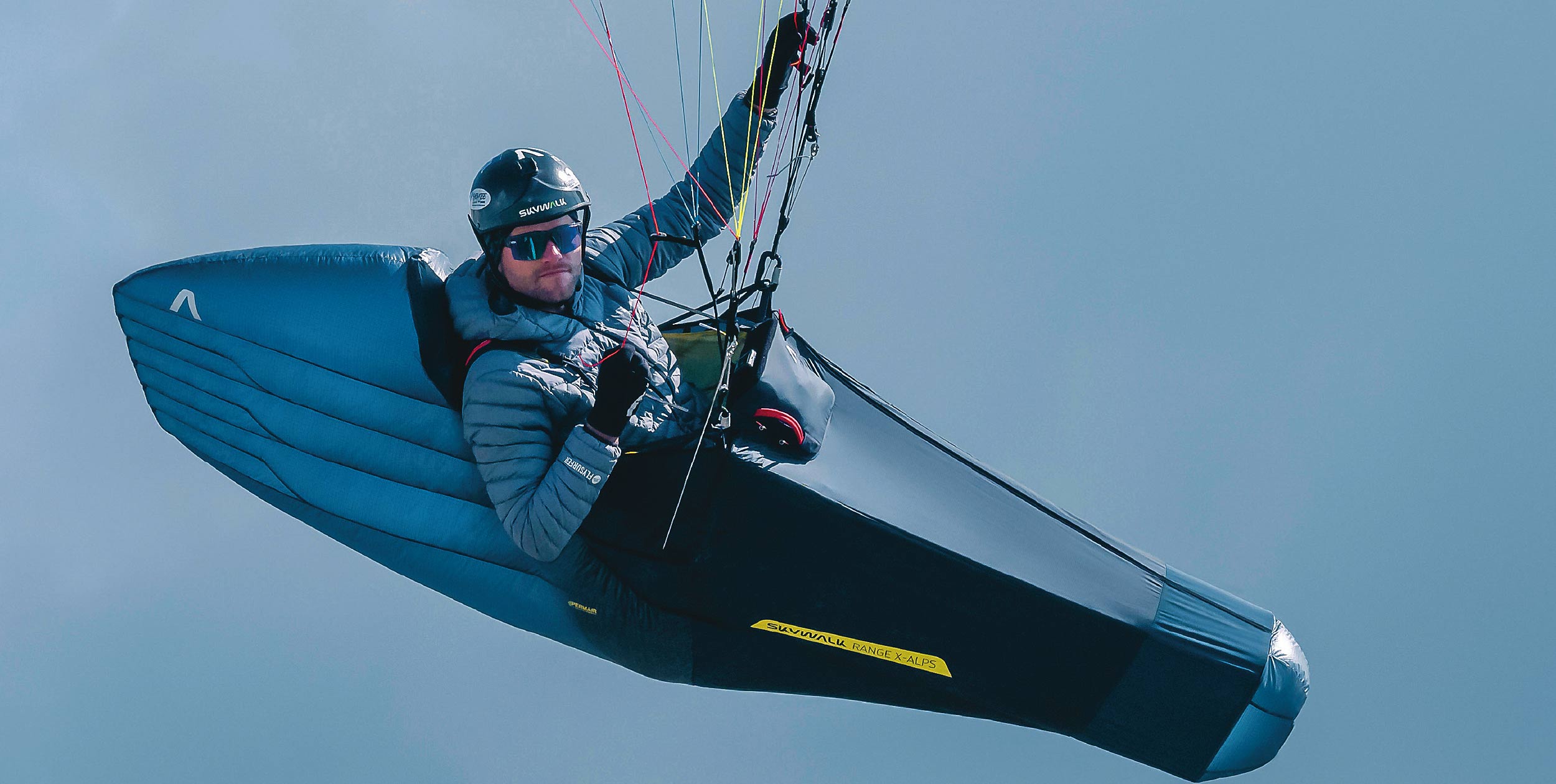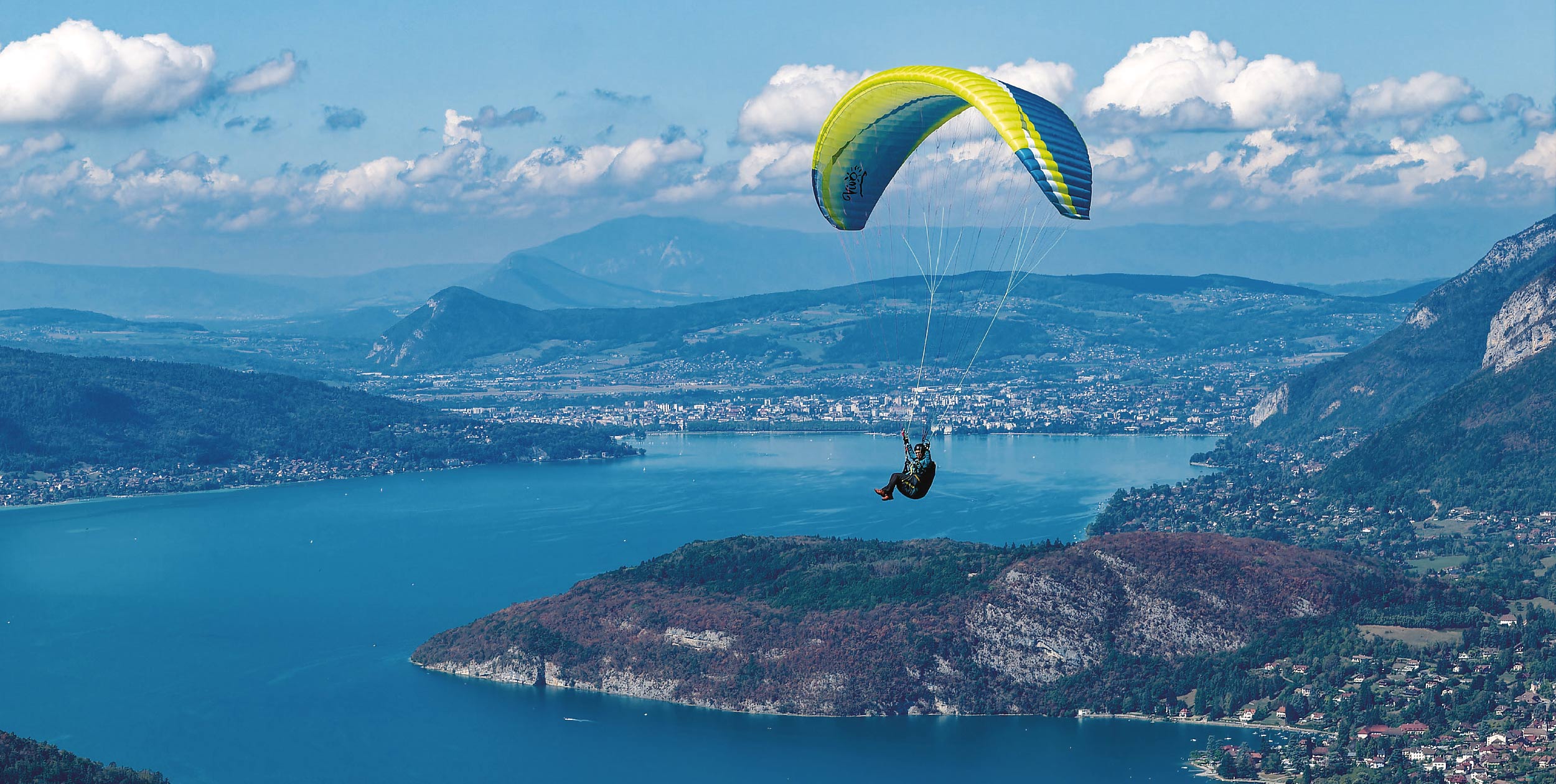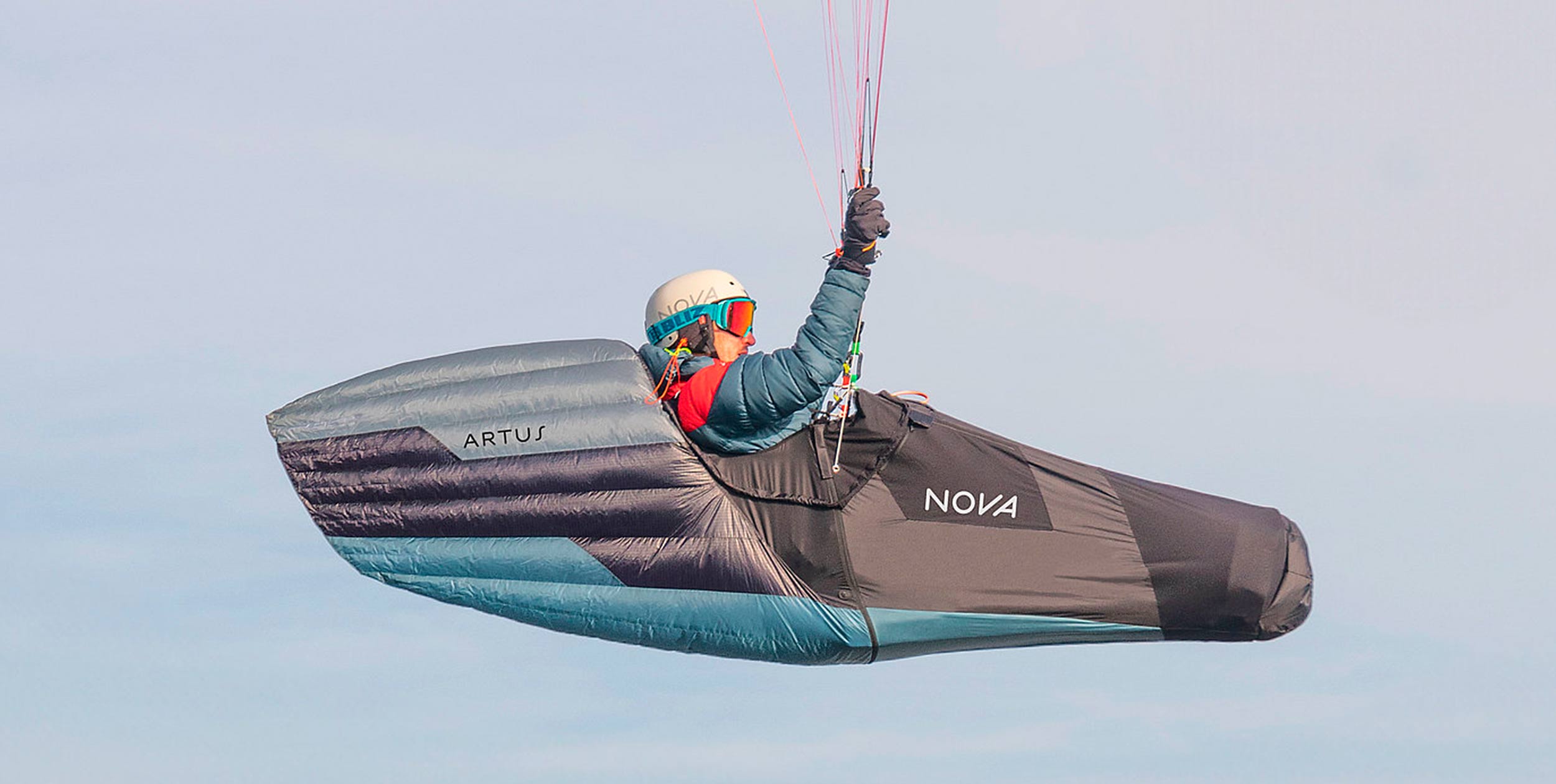The Cusco Paragliding Open in 2006
In our quest to unearth the world’s most stunning paragliding sites, Manu Bonte and Ken Balfour travel to 10° south for an elevator ride into the stratosphere. Behold Peru’s Cordillera Blanca. Translated by Sherry Thevenot and published in Cross Country magazine in 2004
Dominating the middle of Peru is the Callejon de Huaylas which, for free flyers, is roughly equivalent to the Holy Grail, a 120 km long valley enclosed by 6,000 metre high mountains. The ultra powerful lift and stratospheric cloudbases offer an exceptional adventure for pilots who have neither fear nor fault. Oxygen and G suits are mandatory.
Peru – a name that sparkles with tales of Inca treasures, the shiny blades of the conquistadors and the Temple of the Sun buried in the jungle … images that filled my childhood dreams.
For any alpinist Peru is a land that inspires legend: Touching The Void by Joe Simpson takes place in the Cordillera Huayhuash; The Vertiginous Andes by René Desmaison is about Huandoy, the materialisation of the aesthetic ideal that the Alpanayo represents.
When I finally got the chance to go there, I went with a certain respect for the mountains, knowing how extremely demanding they can be. It is a realm that is very humbling; at times it takes all your energy or wits just to pull through in one piece.
To fly the Peruvian Andes you need to put yourself in a certain frame of mind: better not to count on a helicopter rescue. In fact, one visit to a local hospital will be enough to get the message across – do not have an accident!
In Lima, don’t forget to fly the coast – and the hotels
Arriving in Lima, the capital of Peru (population 12 million), your first thought is to get out of it as fast as possible – with everything you own still on you. Since 80% of the population live below the poverty line, the country is understandably a jungle, with plenty of traps awaiting the distracted tourist.
There are a few basic rules: avoid unofficial taxis and cheap bus rides with frequent stops. They only multiply the chances of losing your luggage. Your direction: Huaraz, a nine-hour bus trip. On my own trip, between two snoozes, rudely interrupted by potholes in the road, I peered at my altimeter – 4,000 metres … Now we’re talking!
Arrival at Plaza de Armas, the main square of Huaraz (3,000m), is like being in a Technicolor Imax film with a severe headache. Peaks of well over 6,000 metres whose glaciers beam with sunlight surround the city.
The Cordillera Blanca extends over 100km with the city nestling in the middle of the chain. Out of this world, the majestic Huascaran rises 6,784 metres high, rightfully claiming fifth place among the summits of the Andes.
The Cordillera Negra lines the opposite side of the valley, but with more modesty since the peaks only reach to around 5,000 metres. When I think how convinced I had been that mountain sickness wasn’t my thing … well, I was wrong!
After a few days acclimatising ourselves, the surroundings took on a whole new look. Ken and I began to explore the area. One thing about the conditions was clear from the start: we were not just visiting Grandma. It took us a few weeks of alternating between high mountain flying and exploring possible sites to comprehend the basic tendencies of the local aerology in all its glory.
We carried special lightweight “para-andinist” equipment and the idea of attempting a cross country flight over this fabulous chain began to grow obsessive. The awesome panorama we contemplated from the most splendid summits did nothing to quell our obsession.
Topographically, the lay of the land is simple: the valley of Huaylas follows an almost perfect North-South axis from Caraz (2,290 metres) to Conococha (4,050 metres). To the East is the Cordillera Blanca, and to the West, the Cordillera Negra. Around Caraz, the footpath of Pamparoma meets the Cordillera Negra at around 3,900 metres. From the top of the pass to the valley floor there are 200 metres of arid rock face facing NE. So, what more can you want? (Yes, we are in the southern hemisphere!)
Our chance finally came when the stiff breeze stopped sweeping the valley for a few days. The driver of a van packed to the brim offered us a “fowl class” ride on top of his vehicle along with his cargo of chickens – an offer we couldn’t refuse, so we jumped on top gripping the lines that secured the baggage.
After an hour and a half of that (the driver must have forgotten us) we reached the pass, ending, you might say, the scariest part of the flight. We jumped off the roof and hiked up to the most convenient-looking launch area at 3,800 metres AGL.
The wind was strong enough for us not to linger. In fact we moved very quickly, spreading out the canopies. A high-speed take-off run and we launched like rockets. That evening I figured out from my Suunto watch that I had climbed 1,100 metres in less than 2 minutes 40 seconds!
Ken and I attacked the great cloudless blue. Rapidly, we found ourselves far above the peaks, far from any signs of a road. Spotting civilization would be like winning the big stuffed animal at a fair.
The Cordillera Negra revealed itself magnificently from this angle as from nowhere else before. We spotted unknown lakes, patterns on the granite rock faces, hidden fields, animals, secret footpaths and terraces everywhere, showing humanitys indomitable will to cultivate these parts. From above, I tried to imagine hiking through the wilds below, far from the over-crowded base camps and tourist-filled highways.
On the other side the Cordillera Blanca, along with the legendary mountains we had climbed during the past weeks, composed an extraordinary panorama. Underneath, the 120km-long mountain chain kept me astride, though I had only one thing in mind: spotting smoke from a fire in the valley to determine the wind direction.
We made several unreal transitions to find lift over nowhere. Pure bivouac flying country – except, gulp, I had only one litre of water and two bananas in my bag. Thanks to a vertical thermal we got to cloudbase at 5,700 metres right in front of the face of Huascaran and the lagoons of Llanganuco.
In spite of my three pairs of gloves, three Patagonia polar sweaters, a Gortex jacket and pair of pants, my teeth were chattering. A few dozen kilometres further on, Huaraz rose 6,400 metres high.
The strangest feeling was that everything began to accelerate. I watched Ken practically bite the daisies 1,000 metres below me, then three minutes later he was 500 metres above. The rollercoaster ride, plus the cold, plus the hypoxia made my head feel as though it had been put in a clamp. It felt like flying in The Matrix!
We ended our flight on the soccer field at Recuay after chalking up 80km. Everything stopped at once: the cold, the whines of the vario, the tension … Ken and I heartily shook hands and wiped away our tears … a true publicity shot for Marlboro/Coca-Cola/Hollywood (delete the inappropriate).
We had just streaked down two thirds of the Cordillera Negra, equipped with a mountain wing weighing 3.2 kg, a 350g harness, an audio only vario and an altimeter watch. Its hard to get simpler than that!
The ultimate challenge that still eats at me is the grand circuit: Caraz-Concococha by way of the Cordillera Negra with a return over the mythical summits of the Cordillera Blanca making 240 kilometres of total commitment in the air. Who knows if the chance will come some day, or if it will still be as meaningful if Ive found my Holy Grail by then.
Whether you seize the chance to ride the raging thermals of the Peruvian Andes, or whether you offer yourself a simple morning flight in this extraordinary panorama, the experience will undoubtedly be engraved in your logbook forever. For my part, after 15 years of nomadic living, what I discovered in these parts was the ultimate, the purest, the craziest, the most astonishing experience that free flying has ever given me.
TRAVEL AND FLYING INFORMATION
WARNING
At 10° latitude south, the aerological conditions are probably like nothing youve ever encountered in your life as a pilot. We highly recommend that you take the time to observe, and to adjust to the conditions by flying early mornings, then very progressively move into launches later in the day.
HOW TO GET THERE
International flight to Lima, followed by a bus for Huaraz (recommended company: Cruz del Sur).
WHERE TO STAY
In case you have to spend a night in Lima, we suggest Hotel Espana, a kind of cheap, safe and simple place. Huaraz is a city with sporty tourist attractions and numerous hotels offering a full range of accommodation from the grungiest dug-out to a palace. Try Hotel Belenita if you want something cheap and simple.
WHEN TO GO
JUN-SEP: in the Andes, outside of this season is “Bolivian winter”: humid and rainy.
NOV-FEB: this is the best season for flying along the coast. You can fly all year round but there is a good chance of encountering thick fog outside of these four months.
PILOT ABILITY
Even if it is possible to launch newly-qualified pilots very early in the morning, the conditions evolve rapidly into something for hardcore pilots only. However, the coastal sites are accessible to anyone capable of taking off in a hefty breeze.
PERU INFORMATION AND CONTACTS:
Currency: Sol
Time Zone: GMT -5
Internet: www.huaraz.org and www.perufly.com
LAUNCHES
NEAR HUARAZ
Around Huaraz there are a number of possible launches. Near Caraz the site called Pan de Azucar (Sugar Loaf) is probably the best of Callejon. The take-off at the site called Buenos Aires is very easy and landing is on the huge soccer field next to the Caraz-Yungay road (accessible by car – the east footpath in at the north end of Yungay).
In the same sector, the Cordillera Negra Col on the Pamparomas footpath is probably the best take-off for long-distance flights. But it is reserved for experts due to the mighty conditions that reign.
AROUND HUARAZ
It is possible to fly from Pukaventana and is possibly accessible by car as one comes from Rataquenua, or on foot by climbing straight south from the city. The landing zone called “Campo Redondo” right in the centre of town is very tight and turbulent after 9am.
The areas around Jangas and Tarica are prohibited due to their proximity to Anta airport.
Many places in this wilderness are accessible by foot and offer sublime flights. For example Condorhuayn (4,450 metres on the Cordillera Negra, a one-hour hike from the Santo Toribio Mines) offers a fabulous view of the Cordillera Blanca, a flight over Huaraz and a landing in the big stadium.
TOWARD RECUAY
Under the antennas on the Aja footpath there is a relatively good take-off though it requires a good glide angle to reach Recuay (soccer stadium and landing zone).
PARA-ANDINISM
In the Cordillera Blanca, para-andinism is the thing for experienced pilot/alpinists. Many summits have already served as launches, the most frequent being Ballunaraju (5,685 metres) offering different possibilities for taking off during the climb, also Pastoruri (5,240 metres), Urus (5,495 metres), Ishinca (5,530 metres), Pisco (5,752 metres), Huapi (5,421 metres), Tocllaraju (6,034 metres) Huascaran (6,785 metres) and others.
ALTERNATIVE LOCATIONS IN PERU
The Pacific coast offers numerous places to soar, the best known being the park of Amor in the centre of Lima used by many paragliding schools. Heading south, there are plenty of sandy cliffs for leisurely flights along the coast.
The most accommodating area for cross country flying is probably the region of Cusco. On the flanks dominating the Sacred Valley of the Incas, the conditions are strong but not exaggerated, and have sent some pilots on 100km-long flights. Carlos, a Peruvian pilot living in Arequipa, cleared the surroundings.
As for the rest of the country, there is plenty yet to discover.
AEROLOGY AROUND HUARAZ
AT ALTITUDE
April and May are generally the months of calm winds at altitude with a constant NE tendency. Aerological conditions are favorable for para-andinism, though snow conditions are difficult (deep, no traces…).
On the other hand during mid-June to the end of July, the snow is packed and the wind strengthens, increasing ones chance to reach summits over 6,000 metres. From August 15 onwards the dominant northeast wind disappears, making way for variable winds. Appearance of the northwest wind increases the valley breeze very early and southeast winds encourage thermic conditions.
IN THE VALLEY
In general, around 1pm the rising valley breeze makes the valley entirely unflyable. Even as early as 11am there can be very strong, turbulent breezes. Generally, they do not subside before night time. Rather, go very high up (600-700 metres AGL) and hack up the thermals. Only on rare days youll find no breeze at all.
HUARAZ CITY
The Cordillera Negra dips to the level of Huaraz. Often around 1pm there is a strong southwest breeze (and frequent dust devils) that descend the col to climb up the faces of the Cordillera Blanca. Landing in the Huaraz basin can be extremely rough as early as 10am.
MOUNTAINS – CORDILLERA BLANCA
In many valleys (Cojup, Quilcaywanca) the Northeast wind (the dominant wind during the season) descends low. For example, you can take off in a low east wind from Huapi (5,400 metres) and be pushed strongly in reverse for a good 300 metres.
The pecularity of Quebrada Llaca and the Ballunaraju flight is that Ranrapalca and Oshapalca make an effective screen; in the valley and on the ridge you find feeble lift, though in the middle of the valley fairly high up, you get pushed out by a laminar northeast wind.
• Got news? Send it to us at news@xccontent.local. Fair use applies to this article: if you reproduce it online, please credit correctly and link to xcmag.com or the original article. No reproduction in print. Copyright remains with Cross Country magazine. Thanks
Subscribe to the world’s favourite hang gliding and paragliding magazine







